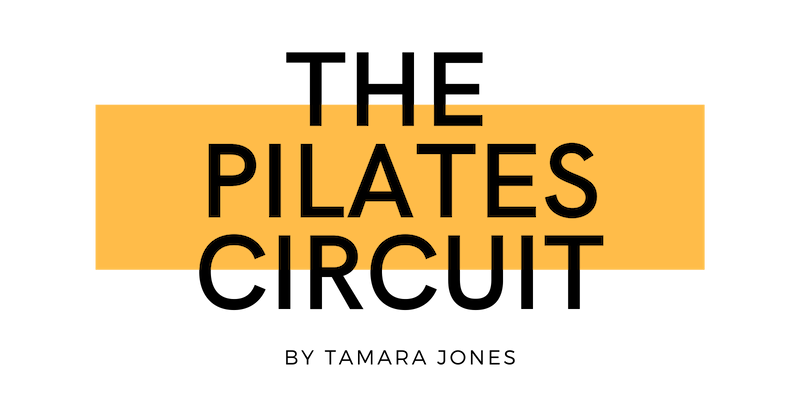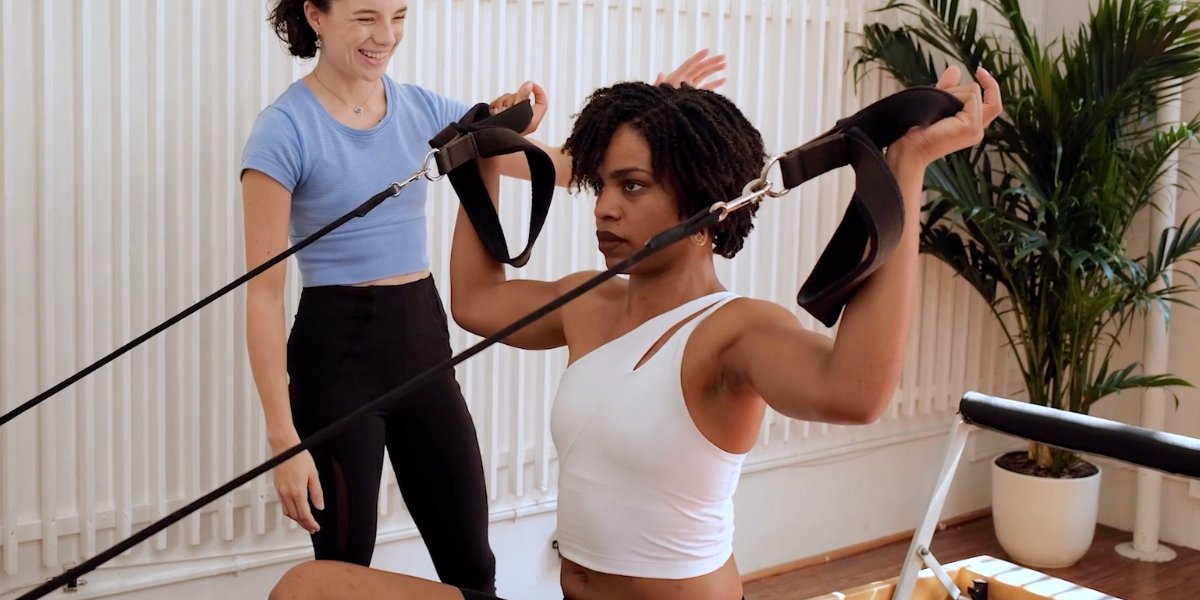What to Wear to Pilates Reformer Class? (The Complete Guide)
Understanding what to wear to Pilates Reformer class can significantly impact your comfort and performance. Your choice of clothing and accessories can elevate your workout, ensuring you feel comfortable, supported, and confident throughout the session.
From optimal tops to the right footwear and accessories, here's your comprehensive guide to nailing the perfect outfit for a smooth Pilates experience.
A Complete Guide to What to Wear to Pilates Reformer Class
When it comes to choosing what to wear to Pilates Reformer class, it's not just about the aesthetic. Dressing for Pilates Reformer classes requires a balance of comfort, functionality, and style. The right attire not only supports your movements but also enhances your overall workout experience.
Let’s explore what to wear to Pilates Reformer classes to maximize both comfort and efficiency.
Optimal Tops for Maximum Comfort and Efficiency
Opt for fitted yet breathable tops. When a shirt is too loose, your instructor won’t be able to see your form (specifically your abs and spinal position), which can significantly affect the instructor feedback you receive.
Crop tops are fantastic, as well as any tops that sit nicely and don’t move around when changing positions. Expect to sweat a little bit, too. T-shirts are great, but you may find that a thick cotton shirt gets a little sweaty once you start moving around.
RELATED: What to Expect from a Pilates Class
Bottoms for Pilates Reformer: Leggings or Shorts?
For your bottom half, prioritize flexibility and coverage. High-waisted leggings or longer bike shorts that are stretchy and comfortable will support you well.
You don’t want your shorts too short if you feel exposed lying down with your legs up to the ceiling. Likewise, we recommend clients avoid shiny materials as we’ve found people will slide around the Reformer.
Ultimately, you won’t feel as steady as you would in cotton leggings.
To preserve the equipment, all studios will also ask you not to wear anything with a zipper or button in the back. These features can damage the leather on the machine.
As a courtesy, please remember to always double-check for embellishments and hidden zippers on the back of your leggings.
Hair for Pilates Reformer: Do you need to keep your hair up?
You do not have to keep your hair up, but it is possible for hair to get stuck in the Reformer springs and generally get in the way, so we highly recommend putting hair back in a style that’s comfortable.
When you lie down on the Reformer, you lie on the back of your head, so a low ponytail or high pony/bun will keep you comfortable. That high ponytail that you see many people walking into Pilates studios with is quite functional.
The Role of Footwear in Pilates Reformer Classes
Do You Wear Shoes for Pilates?
Pilates is typically practiced barefoot or with specialized grip socks, rather than traditional shoes. This allows for better connection with the equipment, improved stability, and greater control during exercises. Bare feet or grip socks enhance your ability to engage your muscles properly and maintain proper alignment.
By avoiding shoes, you also gain a better sense of foot mechanics, which is essential for many Pilates exercises focused on balance, strength, and flexibility. If you're new to Pilates, check with your studio to confirm their specific guidelines for footwear.
Do I Need Grip Socks for Pilates?
The debate between grip socks and going barefoot is common. Grip socks provide traction and stability, preventing slips during movements, while some prefer the connection of bare feet with the Reformer platform.
Consider your comfort and the studio's guidelines when making this choice.
At The Pilates Circuit, you can do barefoot or Grip socks. It’s entirely up to you! Our instructors lean towards bare feet, but whatever keeps you safe on the Reformer.
Note: Regular socks will not work on the Reformer. There are many exercises in the Pilates Repertoire that cannot be done without traction or become extremely unsafe without grip. Hospital socks and Trampolining socks work a treat; you don’t need fancy Barre-style socks.
The Importance of Fabric Choice in Pilates Attire
Materials like spandex blends or moisture-wicking fabrics ensure optimal movement and help manage sweat, keeping you cool and focused during the workout. Understanding what to wear for Pilates ensures you select fabrics that support flexibility, comfort, and performance.
We highly encourage finding something that makes you feel the most comfortable - you’ll be sweating, lying down, standing up, and bending over.
What will allow you to move without worrying about your outfit?
Pilates isn’t a crazy sweat, but we definitely move, so breathability will make you feel more comfortable.
Dressing Smart for Pilates Reformer: Do's and Don'ts
This section offers guidance on Pilates Reformer attire do's and don'ts. It ensures your clothing meets practical Pilates demands. Learn about suitable materials and what to avoid.
These tips aim for smart dressing, enhancing your Pilates effectiveness and enjoyment.
DO Wear This:
Find a supportive workout top that shows your body and feels comfortable.
Wear leggings or longer bike shorts that allow you to move while covered.
Look at the studio’s policy about grip socks before going (some studios have compulsory grip socks and sell them for $25+ so don’t get caught out).
Try moving in your outfit before you get to the studio. Is it comfortable? Does it allow you to move? Is it distracting you when you move?
DON’T Wear This:
Don’t wear clothing with zippers, snaps, or excessive embellishments that might cause discomfort or damage to the equipment.
You shouldn’t wear extremely loose-fitting clothing that might get caught in the Reformer during exercises or prevent you from seeing your alignment.
Don’t buy new clothing or feel like there’s a specific Pilates aesthetic that you need to fit into. Think: Function > Fashion.
Enhancing Your Pilates Experience: Do you need anything else?
Many studios offer many complimentary services like water, hair ties, and towels. At The Pilates Circuit, we have a Nespresso machine, towels, snacks, water, and electrolytes available to you every session.
If you’re testing a new studio, bring a water bottle, a hair tie, and a towel just to ensure you’re covered! The guidelines presented in this blog should set you up for Reformer success!
Closing Thoughts: Putting Together Your Pilates Reformer Outfit
Mastering what to wear to Pilates Reformer class is all about balance. The goal is to prioritize comfort and functionality above style.
Aim for clothing that lets you move freely without distractions, supporting your practice and maximizing your workout's effectiveness.
Your attire isn't just about fashion; it's key to ensuring a successful Pilates Reformer experience. Experiment with different clothing options, but always prioritize comfort and functionality to maximize your sessions.
Feel confident and prepared for your next Pilates session with the perfect attire and expert guidance. Looking for private Pilates in NY? Book an intro session at The Pilates Circuit and experience personalized instruction designed to help you feel your best. With convenient locations in Chelsea and NOMAD, we’re here to support your fitness goals in style and comfort.
You can schedule your class by visiting our new client booking page.
FAQs
-
Pilates is not as high-impact or cardio-intensive as some other forms of exercise like running or high-intensity interval training, so you may not sweat as much during a Pilates session compared to those activities.
The intensity of sweating can also vary depending on the intensity of the exercises, room temperature, and individual differences in metabolism and perspiration. But trust us, you’ll be working hard just not Hot Yoga level sweating.
-
Wear comfortable, form-fitting clothing that allows for ease of movement! You should avoid loose or baggy attire that may get caught in equipment. Pilates socks with grip bottoms or bare feet are also recommended to provide traction and stability during exercises.
Feel free to bring your own water bottle, but towels and water cups will be provided.
-
Common equipment aside from the Pilates Reformer includes resistance bands, Pilates rings, stability balls, and dumbells.
The Reformer achieves 90% of the resistance that we need and then we add it some fun props to build on it.
Meet Tamara – Your Pilates Expert
Hi! I’m Tamara, a Certified Pilates Instructor and founder of The Pilates Circuit in NYC. With 9+ years of experience, I specialize in results-driven, athletic Pilates to improve posture, core strength, and overall wellness. Whether you're recovering from diastasis recti or leveling up your fitness, I’m here to guide you every step of the way!
Find us on Instagram:



